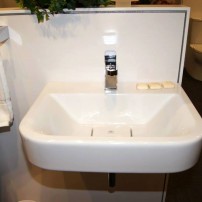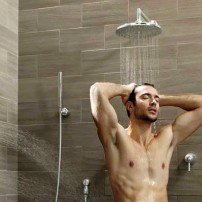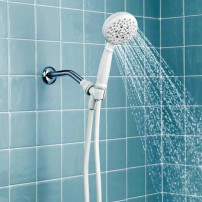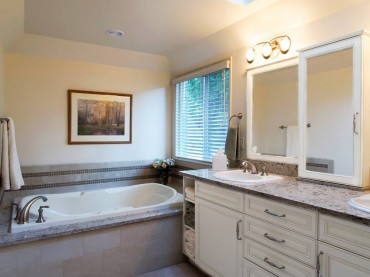
Roman tub filler by Kohler
Go into a plumbing showroom or home building center and you will be amazed by the variety of types, styles and finishes available in bathroom plumbing fixtures today.
Your first step in selecting fixtures is to define your style. Some homeowners favor a “coordinated” look whereby the sinks, toilet, tub, shower base, faucetry and even the decorative hardware/lighting all match stylistically. To achieve this look, several manufacturers including Moen, Kohler, Delta and others offer style “families” so that once you find a style you like, your decision process may be significantly simplified.
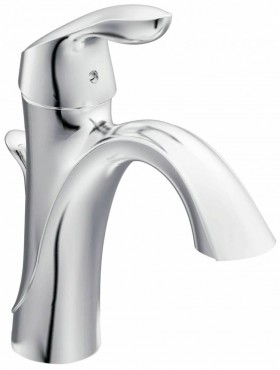
The following article is designed as a decision tree to help you make the right choices for your bathroom by understanding your options.
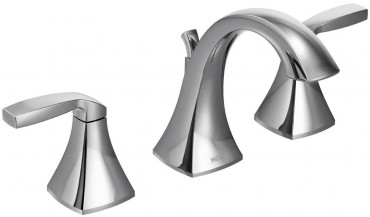
Faucets come in a variety of styles and finishes, each befitting to a general architectural style. Some styles are available in both a water conservation model with a 1.5 gallons per minute flow rate as well as the standard of 2.2 gallons per minute (look for the EPA WaterSense logo to determine if the faucet comes in a conservation model).
The first branch of your faucet decision tree is mounting style:
- Single lever on the base faucet (requires one install hole on the sink or counter)
- Dual handle, 4-inch spread faucet (requires two install holes)
- Dual handle, 8-inch widespread faucet (requires three install holes)
- Wall-mounted faucet (requires one, two or three holes in the wall)
- Motion- or touch-activated faucet (operates with sensors and typically requires just one installation hole).
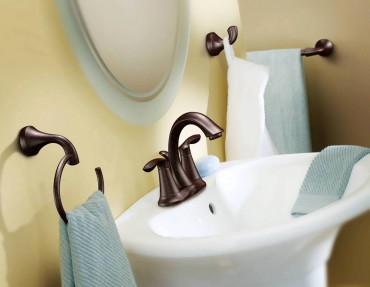
The second branch of the faucet decision tree includes:
Style: From utilitarian to ornate, there is a style for everyone.
Finish: The finish will be based on what is offered in any one style along with the overall color theme for the room.
Flow rate: If water conservation is important, consider an EPA WaterSense fixture with a 1.5 gallons per minute flow rate vs. a standard flow rate of 2.2 gallons per minute.
Sinks come in a variety of materials, shapes and sizes. The most common sink is a 17-inch, self-rimming oval sink. The first branch of the sink decision tree is the installation type.
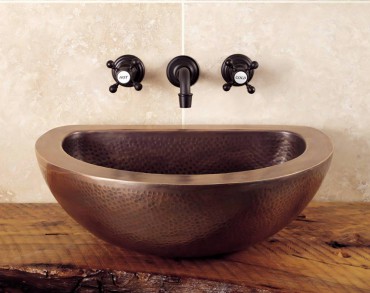
There are five basic installation options, each with their own merits:
- Self-rimming (installed on top of the counter with a faucet mounted in the deck of the sink)
- Tile-in (installed in the counter with the faucet, etc. mounted on the sink deck)
- Undermount (installed under the counter with the faucet mounted on the countertop behind the sink or on the wall)
- Intergral (the sink is an integral part of the countertop)
- Pedestal or console (the sink bowl is mounted on a pedestal or in a frame referred to as a console)
- Wall-hung (the sink is bolted to the wall and suspends over the floor)
- Vessel (the sink sits on the countertop).
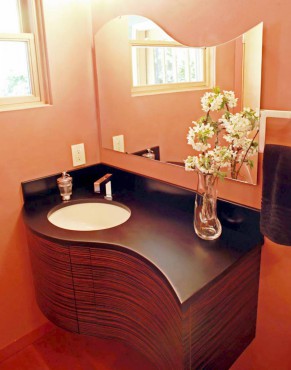
The second branch of the sink decision tree includes:
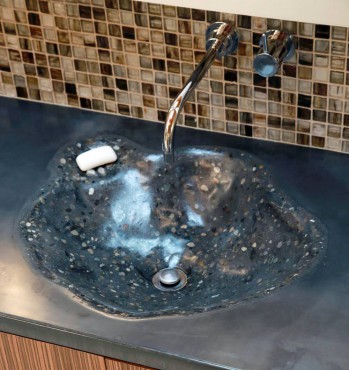
Size: If you are retrofitting into an existing cabinet, you will want to measure the interior space of the cabinet to determine if your selection can be accommodated, and if you are remodeling/building with new cabinets, you will want to ensure that the size of the sink cabinet has been appropriately specified.
Shape: Round, oval, rectangle, square or eclectic, selecting a sink shape is a personal choice; however, consideration should be given to the style of the room. For example, a hexagonal or organic- shaped sink bowl may not look appropriate in a traditionally styled bathroom.
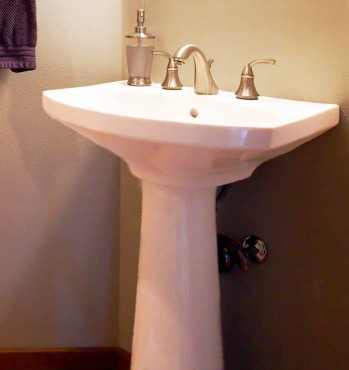
Material: Cast iron, vitreous china, glass, stainless steel, copper, stone, concrete, solid surface, glass and even wood — the material selected will be greatly influenced by lifestyle and price.
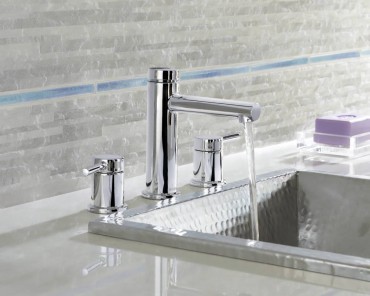
Number of requisite installation holes: Verify that the sink has the requisite number of installation holes for the selected faucet or that there is enough counter space behind the sink to install the faucet selected.
Note: Some undermount sinks have a back flange that is drilled for faucets while others do not — read the sink specifications very carefully before purchasing.
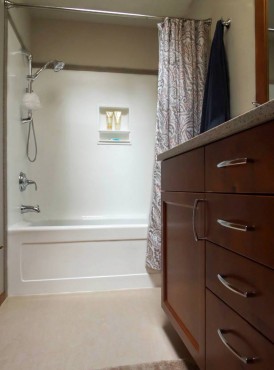
Bathtubs come in a variety of shapes, sizes and styles; however, selecting the perfect tub is a bit trickier than the perfect bathroom sink. Selection will be dictated by the available space for the tub, plumbing requirements and possible install locations for the Roman tub filler, not to mention the feasibility of getting a tub to a second- or third-floor location.
The first branch of the tub decision tree is installation style:
- Skirted alcove tubs (typically installed with three walls surrounding the tub and the front face of the tub is finished to match the inside of the tub, or may be tiled)
- Deck/undermount tubs
- Freestanding tubs.
The second branch on the tub selection tree includes:
Style: Bathtubs come in a wide variety of styles; from ornate, freestanding, claw-foot models to utilitarian “kid” tubs, there is a tub style for everyone.
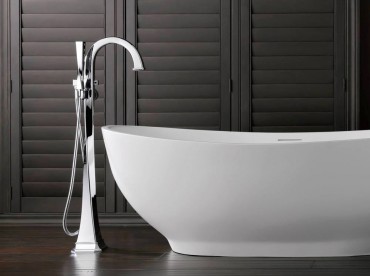
Material: Cast iron, enamel on steel, acrylic, resin, fiberglass, metal, stone and concrete are the primary materials options. The material selected will be based on the overall style of the bathroom as well as the budget. One other consideration is accessibility. Cast iron and resin tubs that are freestanding are very heavy and it may not be feasible to deliver them to a second or third floor.
Drain location: Center drain vs. left or right end drains — options will be dictated by the home’s construction and project budget.
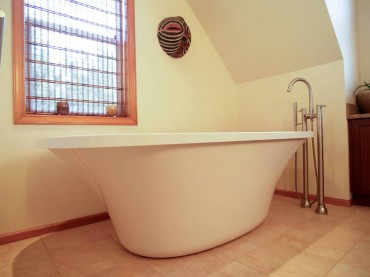
Tub fillers are generally selected after the bathtub. How a tub is to be installed, combined with the style of the tub, will dictate to a large degree the style of the tub filler. Tub fillers can be mounted on a wall, on the floor or on the deck of a tub. All the options are controlled by a valve and potentially a diverter when a handheld shower is included.
Wall mounted: Generally used in a tub-shower combination scenario. A single valve control operates both the showerhead and the tub filler. By pulling up on the diverter on the top of the tub spout, water is diverted away from the shower head to the tub spout.
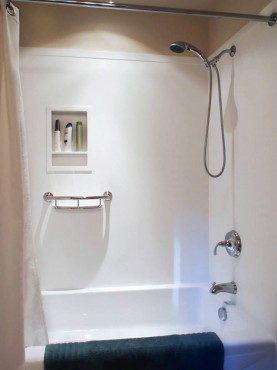
Deck mounted: Installed on a tile or stone tub deck or on the rim of the tub itself. If installed on the rim of the tub, it is important to make sure there is not only enough room on the surface for the tub filler but also underneath for the requisite tools (and hands) to secure the tub filler.
Floor mounted: When selecting a floor mounted Roman tub filler, it is important to make sure the spout will clear the edge of the tub both in terms of height and projection.
Showerheads and body sprays provide both hygiene and relaxation options inside a shower enclosure or wet room. Depending on the overall size of the shower, it is not uncommon to have more than one showerhead in the shower area. Several manufacturers offer the same style of showerhead in two different flow volumes — low flow and standard flow. Most consumers will feel little, if any, difference between the low flow models and the standard flow models.
Showerheads come in three basic styles:
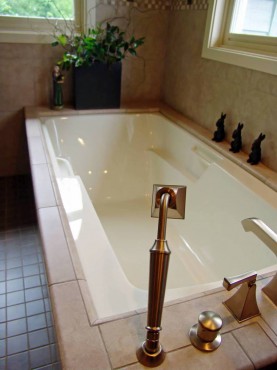
Fixed wall mounted: The head is attached to an “arm,” which is installed on the shower wall anywhere from 72 to 80 inches above the shower pan. Some heads come with multiple spray options such as rain and massage.
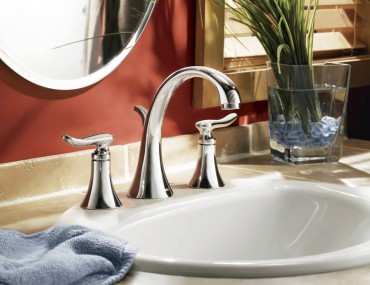
Fixed ceiling mounted: Typically referred to as rainheads, these heads provide an “experiential” shower whereby the purpose is typically more relaxation than hygiene (for individuals with thick hair, it may be difficult to rinse hair products out under a rainhead).
Handheld: Today’s handheld showerheads have all the power of a fixed showerhead. Many handheld heads come with multiple spray options as well as low and standard flow rates. Two of the greatest benefits of a hand-held shower are ease of cleaning the shower or pets, and the ability to direct water exactly where it is wanted, such as one’s feet and away from things like surgical bandages. Handheld showerheads can be mounted on a stationary hook or on a slide bar, which provides the flexibility of moving the head up or down the bar depending on the height of the bather.
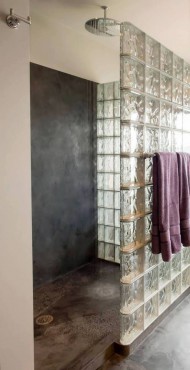
Body sprays: Installed in the walls of a shower and positioned at heights off the floor that target specific locations on the anticipated bather’s body for the ultimate in hydro therapy.
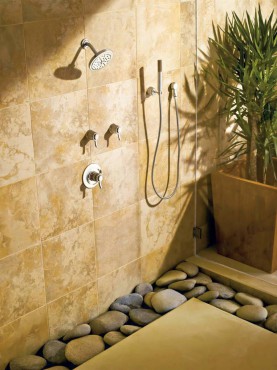
Shower/tub valves control the flow of water to a showerhead or tub filler. Valves are universal in terms of function but not trim (the decorative part must come from the same manufacturer as the valve body). There are two types of valves and both are mandated with anti-scald features so that when a plumbing fixture is used in another part of the home while there is a bather in the shower, there will be no change in water temperature.
Pressure-balance valves: Activate the flow of water by turning a lever or knob from left to right. The volume of water cannot be controlled.
Thermostatic valves: Are paired with a volume-control valve and allow the bather to adjust temperature independent of water volume. They can be a great water conservation mechanism.
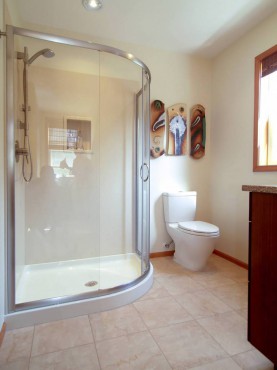
Shower pans or receptors can be purchased ready made from fiberglass, acrylic or solid surface. Preformed pans are typically square in shape, with some being designed for a two-corner wall or rectangular. It is important with selecting a preformed pan to make sure the size as well as the drain location will work with the available space and existing plumbing locations. To dress up a shower pan, decorative drain covers can be installed or for a modern look, a linear drain.
Toilets are a functional fixture that can add a lot of style and convenience to a bathroom. There is a surprising array of choices when it comes to toilets. The first branch of the toilet decision tree is installation style:
Two-piece: The vast majority of toilets installed today are two-piece because of their advantageous price point.
One-piece: A great choice for germaphobes, this options has a lack of crevasses, which makes some homeowners feel more at ease. But there is a price tag that goes with this feature (reason: it is harder to manufacture a one-piece toilet) as well as fewer model options.
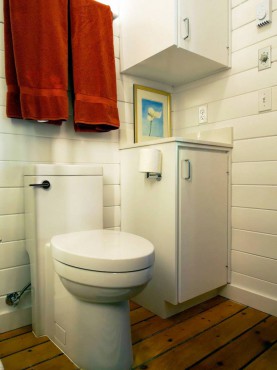
Wall-hung: Mounted on the wall rather than the floor, these toilets are great for small bathrooms and make life easier for anyone who has mobility issues and uses a walker or wheelchair or receives assistance from a caregiver. Wall-hung toilets lend themselves to contemporary style bathrooms.
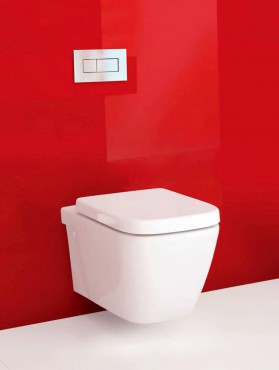
The second branch of the toilet decision tree includes:
Exposed trap: Most toilets are manufactured with an exposed trapway and are available in both one- and two-piece models.
Skirted base: These toilets have a solid base, effectively eliminating the need to clean around the crevasses around the trapway. This style of toilet comes in both one- and two-piece models but has limited style options because of the difficulty in manufacturing skirted models.
The third branch of the toilet decision tree is the flushing options. One flushing style cleans the bowl more effectively than the other but is also noisier so consider this fact and the proximity of the toilet to sleeping quarters. The two flushing styles are:
Wash-down or gravity flush: The most common form of flushing; water comes down from the top of the toilet bowl to “wash” the bowl of debris. This flushing method is quietest.
Pressure assist: The contents of the toilet bowl are removed by a compressed air mechanism in the toilet tank. This style has noticeably less water in the bowl than a gravity-fed one. This flushing option does the best job of “cleaning” the bowl.
The fourth branch of the toilet decision tree comprises the “bells and whistles” of toilets and will be made easy by the available models (or lack thereof) after the first three criteria have been decided on:
Bowl shape: Elongated (most comfortable) or round (best for small spaces).
Height: Toilets come in two basic heights, standard and comfort. Comfort height toilets are taller and are a good choice for people with back/knee/hip issues or reduced mobility in general.
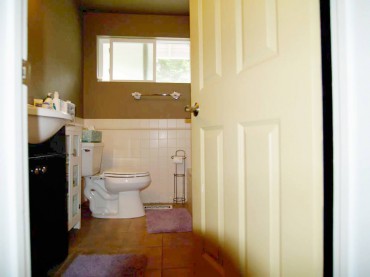
Style: From traditional to minimalist, there is a style for everyone.
Color: Each manufacturer has its own color pallete.
Flush rate: Standard is 1.6 gallons of water per flush while HETs (high-efficiency toilets) use 1.28 or less gallons per flush, including dual flush. HETs keep the water bill down and help reduce the frequency of septic tank pumpouts.
Soft-close seats: Toilet seats that close silently are a much sought-after feature — it is important to check with the manufacturer’s specification to see if there is a compatible soft-close seat for the model selected.
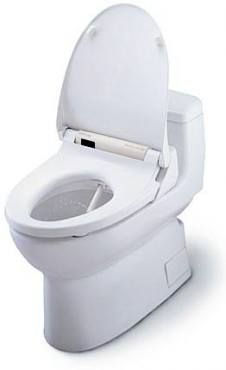
Washlet feature: This can be an accessory or can be built into the toilet. The feature provides “hands free” toileting whereby the users do not need to necessarily use toilet tissue as they are “wiped” clean by warm water and warm air dispensed by the washlet. This feature is particularly useful for people with limited dexterity by allowing them to toilet themselves without assistance while maintaining good hygiene levels. This style of toilet requires both and electrical outlet and a hot water supply line near the toilet.
It should be noted that many manufacturers produce “identically styled” plumbing products at more than one price point. The difference between these identical products is the price and the quality of manufacturing. For example, two faucets by a major manufacturer may look identical but are assembled with different “guts.” The lower priced faucet has plastic guts and the identical but higher priced faucet has ceramic cartridges, which will provide drip-free service for many years to come.
There are many variables to consider when selecting plumbing fixtures. To ensure you are getting the best value for your money, consult with a residential design professional or an experienced plumbing showroom associate. In Kitsap County there are two plumbing showrooms: Ferguson Enterprises in Port Orchard and Keller Supply in Bremerton.




